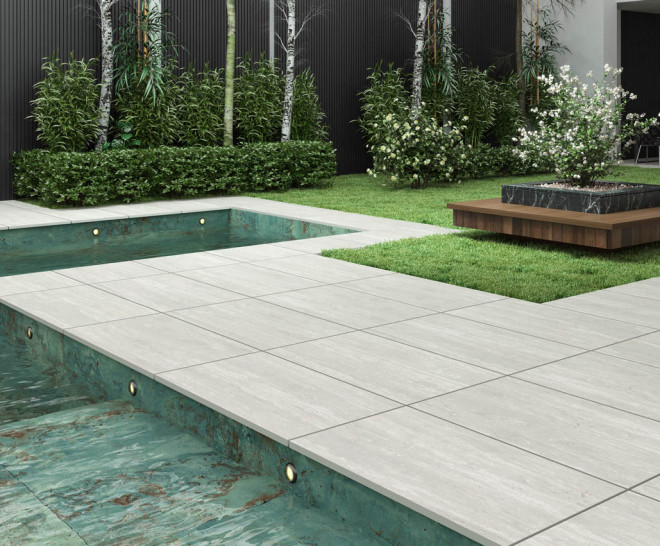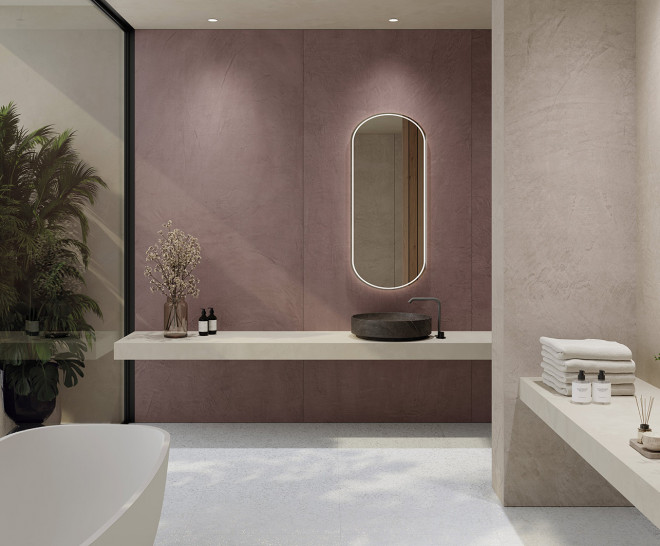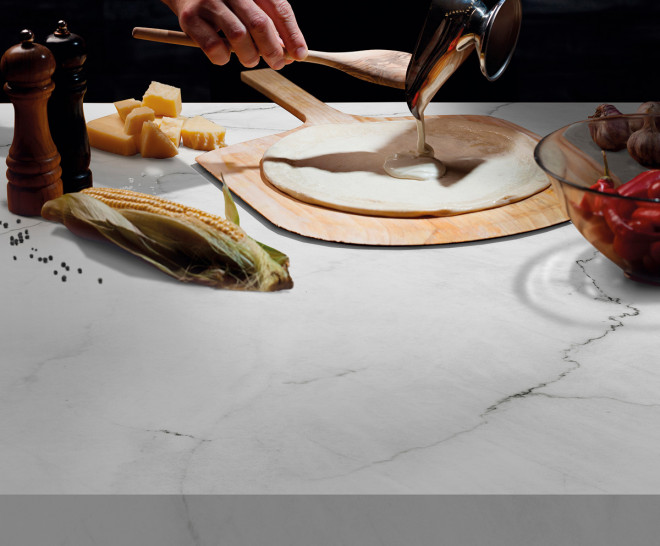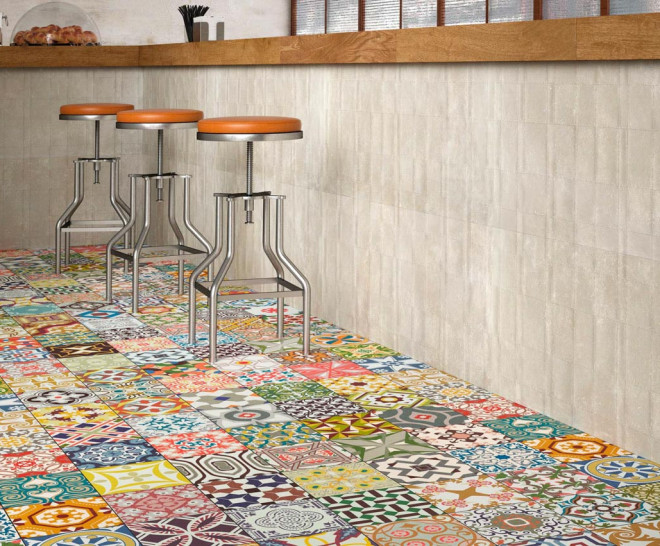Installing an outdoor kitchen is a way to make the outdoor space more versatile. It is used as a means to relax and connect with the environment or to gather with friends and family.
At the same time, it opens up new possibilities in hospitality projects.
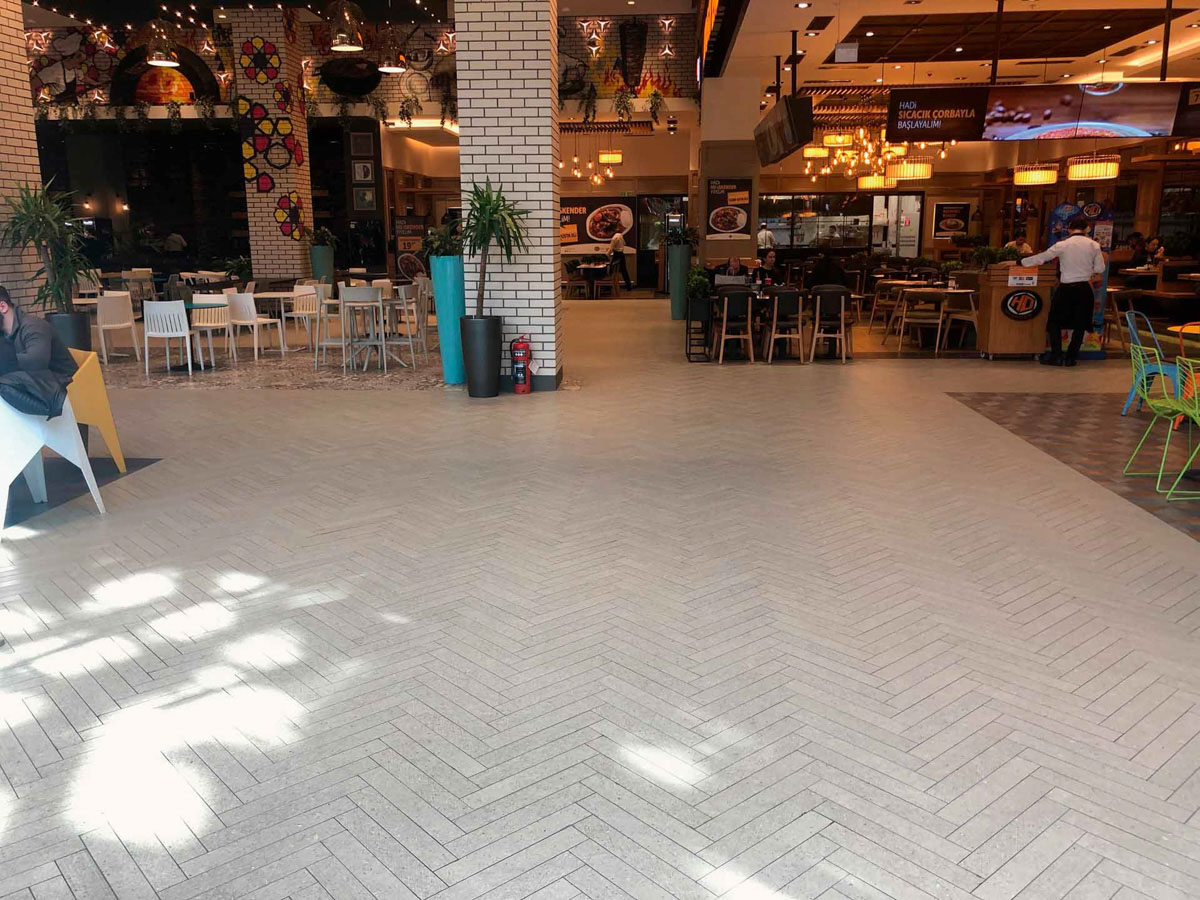
Nanoconcept
Outdoor kitchen designs
A well-designed outdoor kitchen can become a focal point of the home, so we must not neglect either its appearance or the materials used in its construction. They are installed in areas that are more or less sheltered from the elements, and with different shapes depending on the distribution of their elements.
Verandas with outdoor kitchens
One possibility is to equip a closed veranda with a kitchen. Technically, it would be an outdoor kitchen because it is not inside the house, but it would not be exposed to the outside. This allows us to enjoy it all year round, regardless of the weather outside.
If the veranda is an extension of the indoor space, it is advisable to use the same flooring in both areas to create visual continuity. However, we can also take the opportunity to play with the contrast between the floorings to better separate the indoor and outdoor spaces. Materials such as hydraulic floors are a great ally in giving your outdoor kitchen its own personality.
Completely outdoor kitchens
Fully outdoor kitchens are exposed to weathering agents such as heat, wind and water. The challenge will be to choose weather-resistant materials for the surfaces that make up the kitchen. In addition, it is advisable for the floor to have a non-slip finish.
It is recommended that the kitchen be located in the centre of the terrace or garden so that it can be accessed from all points if there is sufficient space. Another option for greater versatility and not to depend so much on the weather is to build a pergola to protect it from the elements. This will allow us to have a semi-exposed kitchen that we can enjoy in summer or spring even if it rains.
Kitchen design with island or U- or L-shaped kitchens
Kitchens are usually designed in an L or U-shape because they make good use of space and facilitate cleaning and storage. Island kitchens are also suitable for small terraces or gardens, depending on their size. In the end, we must consider which shape best suits the way we use the kitchen and whether the space allows us to build one design or another.

Lamiere
Stoneware surfaces for an outdoor kitchen
The general recommendation is to install durable floor and wall coverings, such as porcelain stoneware, as the kitchen will be subject to knocks, stains and temperature changes. Outdoor kitchens can also be more or less exposed to the elements. Porcelain stoneware is easy to clean, withstands cold and heat and does not absorb moisture. It can also be laid on floors, walls or worktops.
Porcelain outdoor flooring
Porcelain outdoor floor tiles are 2cm thick and are one of the best choices for outdoor kitchens. They are extremely resistant to rain, frost and scuffing. In addition, all Apavisa 2CM collections have the equivalent 1CM flooring for indoor use. This makes it possible to create visual continuity between outdoor kitchens and indoor areas.
Outdoor kitchens can also benefit from the non-slip properties of porcelain tiles. This increases safety and prevents accidental falls from spilled liquids or rain.
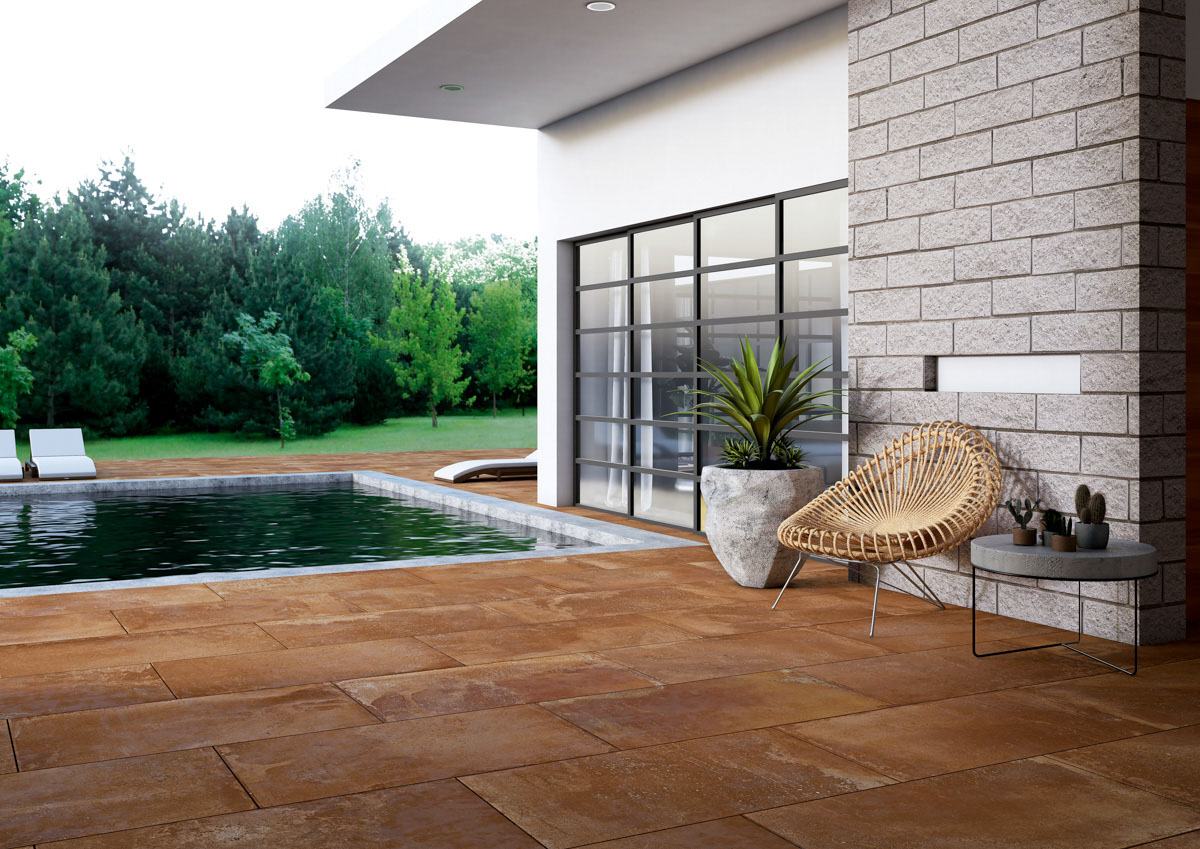
Fire
Porcelain exterior wall tiles
Porcelain tiles are especially useful for porch kitchens or exposed kitchens with a backsplash. Walls can also get dirty easily from kitchen activity, so a material that is easy to clean, easy to maintain and can withstand harsh weather is the best choice.
The wide variety of colours and looks of porcelain stoneware makes it possible to design spaces of all kinds. One example is cement-look porcelain tiles, with an industrial style and neutral tones, or marble-look porcelain tiles for a more natural feel.
Porcelain outdoor countertop
Porcelain stoneware is used for countertops in its large format version. This technical advance allows architects and interior designers to have more design options, as the variety of aspects of large-format porcelain is almost infinite. At the same time, the technical properties of stoneware prevent worktops from being deformed by hot utensils or spilled liquids. In this blog post we already gave you some of the keys to our Apavisa Slabs collection for kitchen worktops.

Metodo
Tile trends for outdoor kitchens
Porcelain tiles follow the latest outdoor kitchen trends thanks to their numerous formats and looks.
Rustic outdoor kitchens
Rustic outdoor kitchens are a design staple. Tiles help to reinforce this aesthetic with looks reminiscent of natural materials. This is the case of wood-look porcelain tiles for the floor, such as Junoon Maple Solid, or stone-look tiles for outdoor use, such as Travertino Navona Solid. Both are non-slip outdoor floors that can enhance a rustic style.
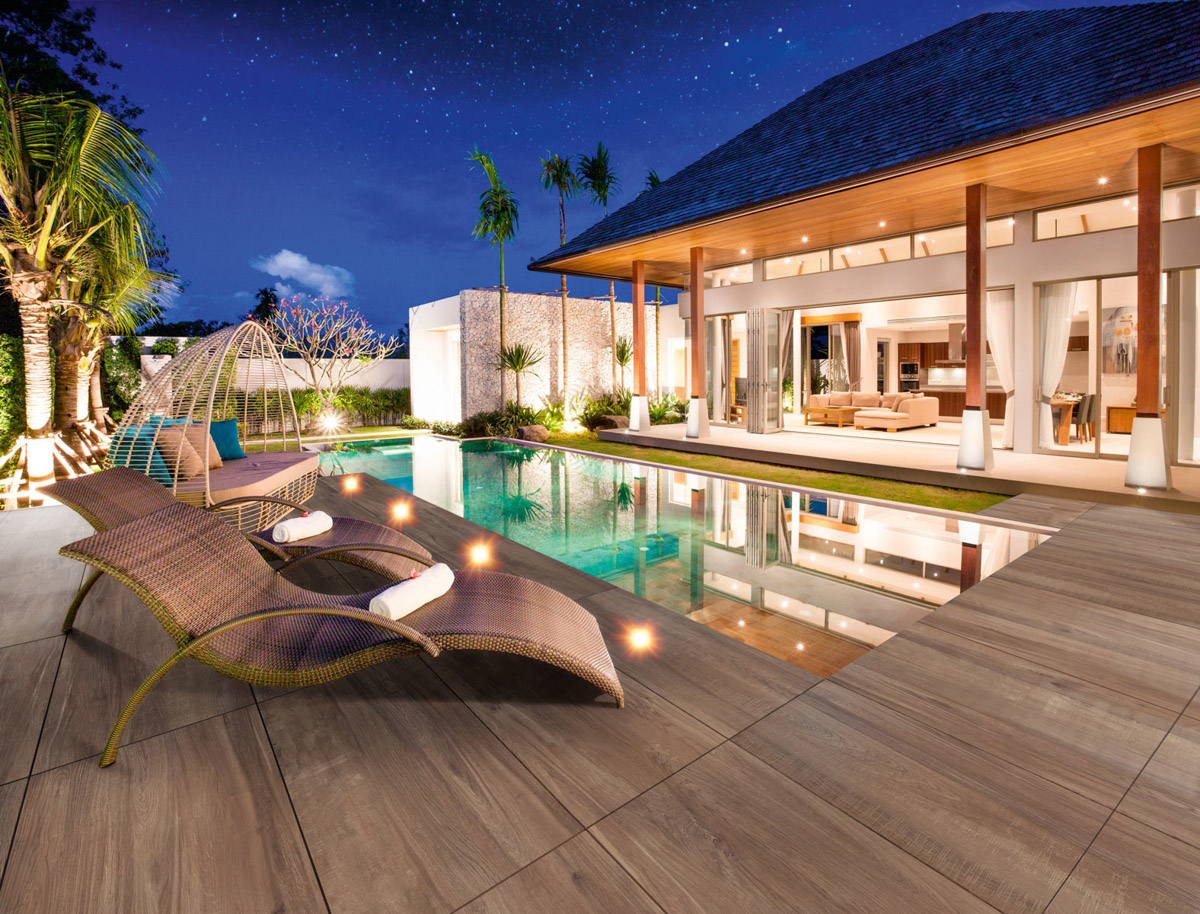
Junoon
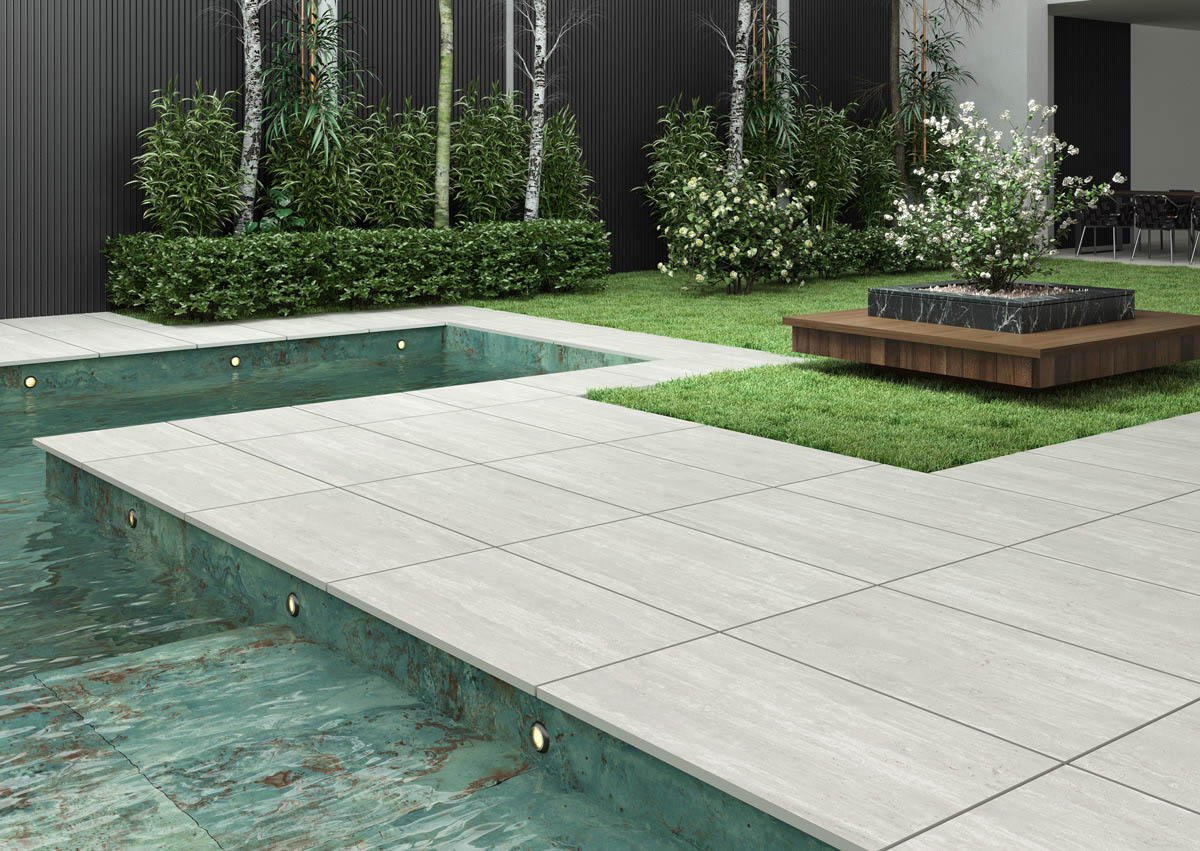
Travertino
Small outdoor kitchen
Small outdoor kitchens are suitable for homes with little outdoor space that are looking to increase their versatility. Kitchens can be built with the essentials on terraces or in small gardens. Depending on whether it is covered or not and its dimensions, we can opt for smaller porcelain tiles for the floor and the splashback. They are among the most commonly used in small rooms and are available in hexagonal, square or rectangular formats.

Emotion
In short, there are several aspects to take into account when designing an outdoor kitchen with its own personality. There is no doubt that having materials as resistant and versatile as porcelain tile is essential.


